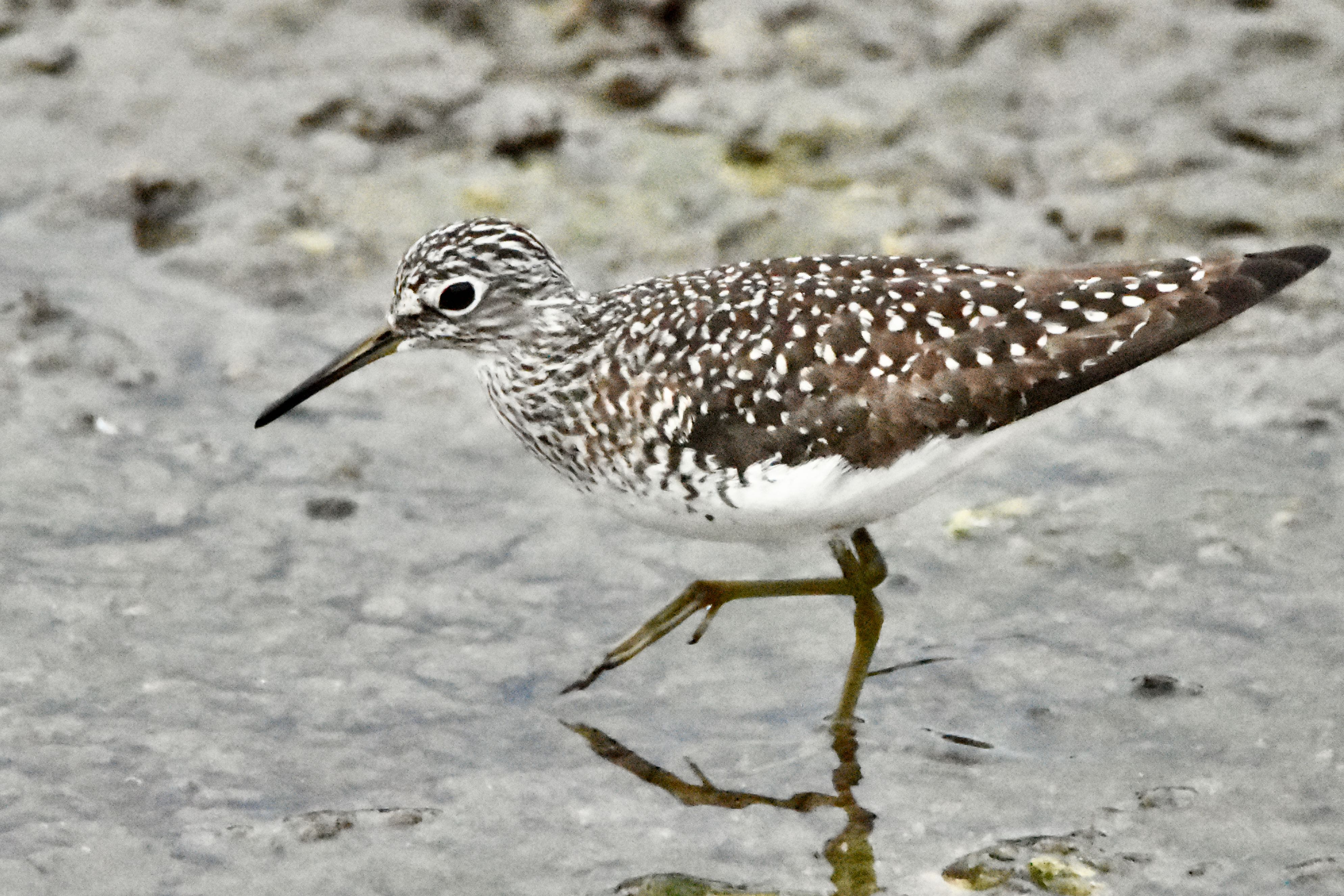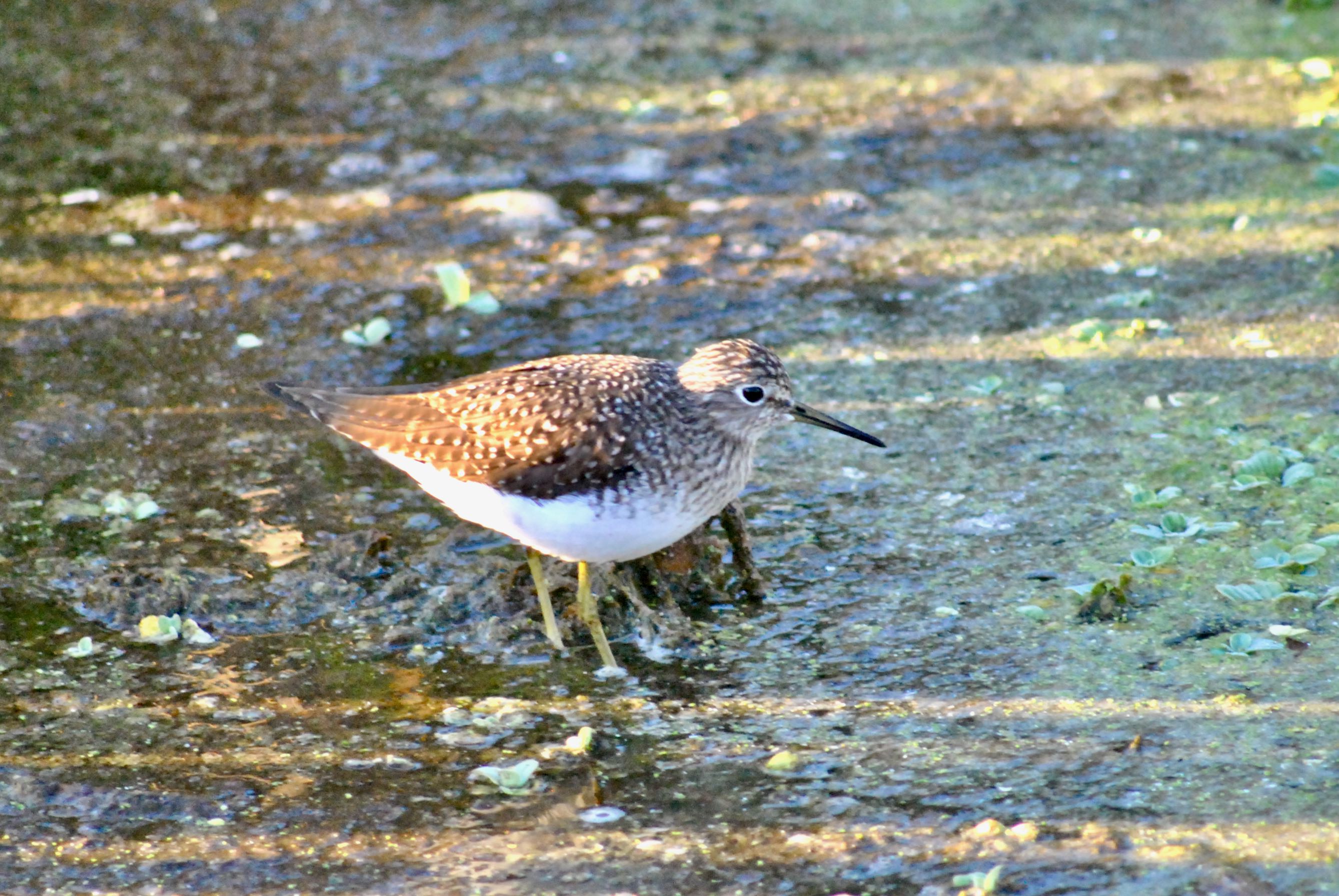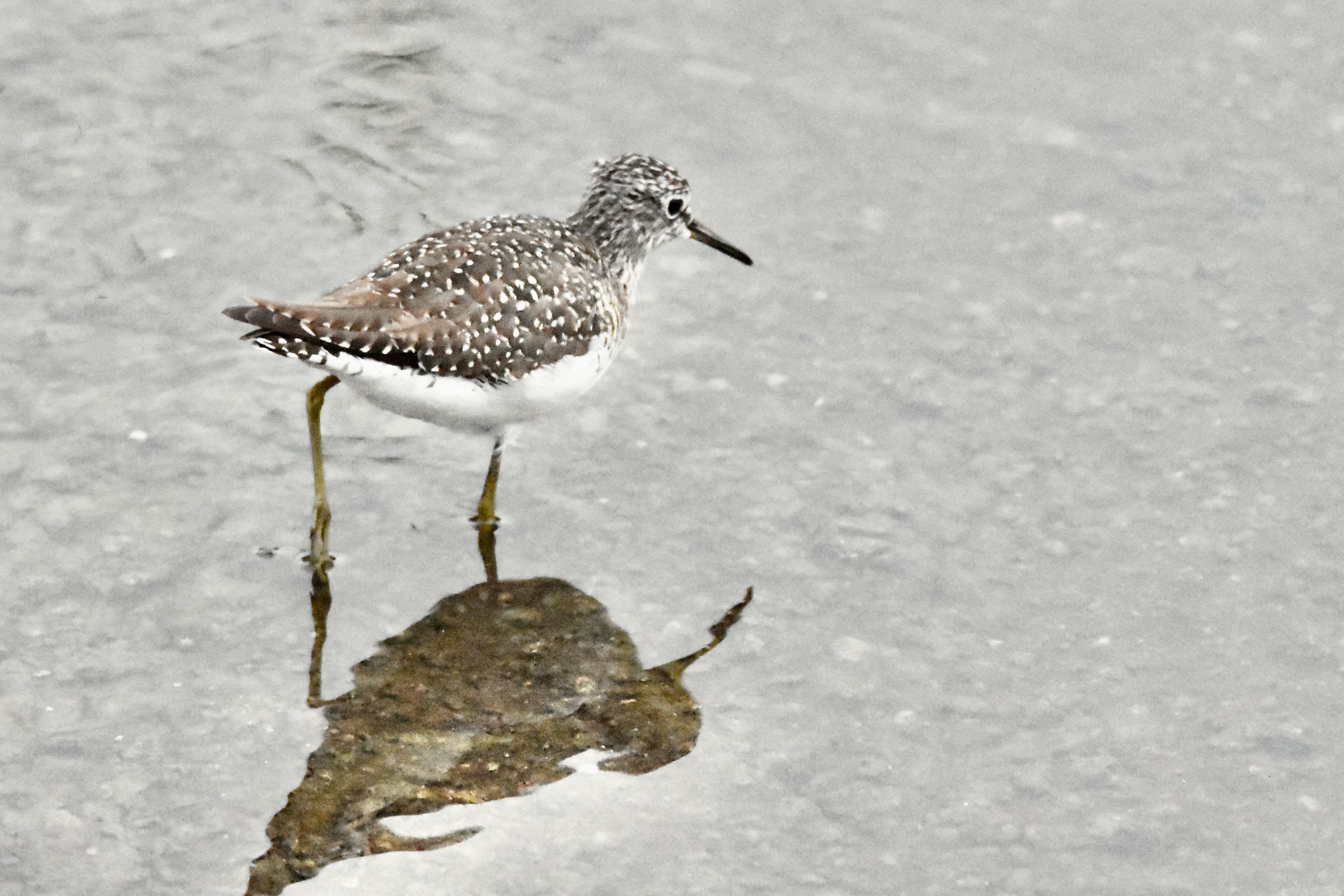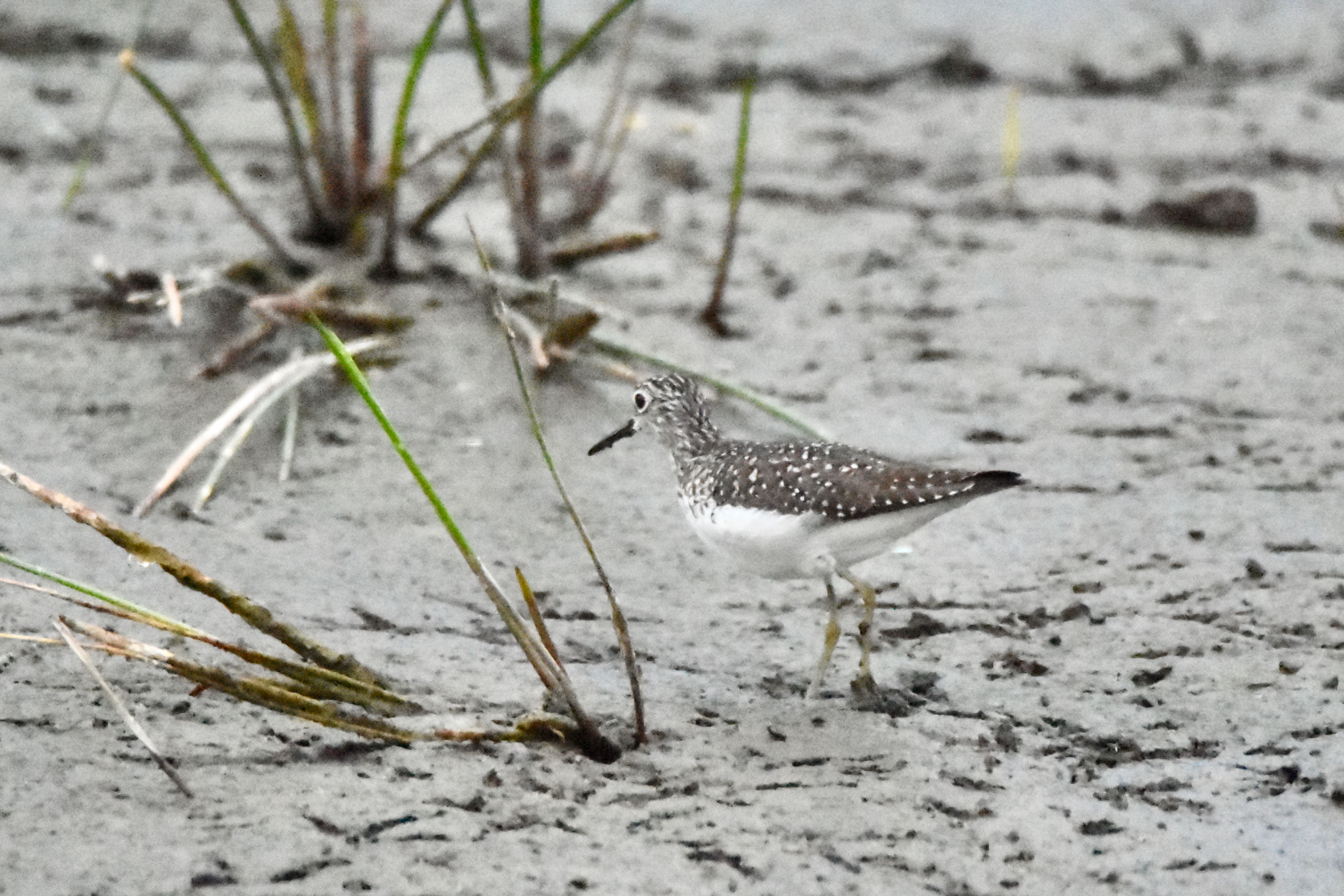
Solitary Sandpiper, photographed at Green Cay Nature Center, Boynton Beach, Palm Beach County, in April 2017.
Solitary sandpipers, Tringia solitaria, don't quite live the lonely lives that their name implies. They're just less social than most shorebirds, especially in migration.
While others make the journey from their summer nesting grounds in the great white north to the sandy beaches of the south in great numbers, solitaries will make the trek alone or in small groups.
And the trip can be a long one. Solitary sandpipers spend their summers throughout Canada and Alaska, then winter in the Caribbean, Mexico, Central America and South America, with the Amazon Basin being a favorite destination. A few will winter over in South Texas and South Florida, but most of the United States sees solitaries only as they're enroute to someplace else.
Solitaries are medium-sized sandpipers, about nine inches long. Their looks are similar to the lesser yellowlegs sandpiper, but have a bold white eye ring to the yellowleg's slight ring; they're spotted, while the yellowlegs is more mottled; and their legs are greenish yellow in contrast to the bright yellow of the yellowlegs.
Solitaries are only one of two sandpipers worldwide that nest in trees. But they don't build nests; they use old and abandoned nests that other birds have built, including those of robins and cedar waxwings. The nest might be relatively close to the ground or it could be high up.
Their lives aren't as well-studied as other birds, partly because of their dispersed population but also because they spend summers in remote and rather inhospitable places that are difficult to get to: spruce bogs. The great 19th century ornithologist, Alexander Wilson, first described the solitary sandpiper in 1813, but a nesting solitary wasn't found until 1903, according to the Cornell Laboratory of Ornithology.
Females lay clutches of three to five eggs that require between three and four weeks of incubation before hatching. It is believed that both parents share incubation duties. Shortly after hatching, the young solitaries are ready for action; apparently they jump to the ground and feed themselves while their parents keep an eye on them. The age of first flight isn't known.
Solitaries forage in shallow water and on shore, finding insects, worms, snails and occasionally frogs to munch on.
In migration, they fly at night and usually alone. During the day, they'll stop in marshes, along the edges of ponds, lakes and streams and along mudflats. They generally avoid tidal basins and saltwater marshes. Winter habitat is similar.
Because their population is spread out, it's difficult to conduct any kind of accurate census of the solitary sandpiper. It seems their population is stable, and the International Union for Conservation of Science rates the solitary as "least concern."
Solitary sandpipers are members of Scolopacidae, the sandpiper family.
Green Cay Nature Center



